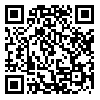BibTeX | RIS | EndNote | Medlars | ProCite | Reference Manager | RefWorks
Send citation to:
URL: http://tbj.ssu.ac.ir/article-1-1829-en.html
Introduction: Chewing gum is the most common chewing thing worldwide which has a lot of health effects such as thwarting dental bacteria's and prevention of mouth dry. Regarding lack of studies about knowledge of community people about health effects of chewing gum, the present study was carried out with the aim of determining the knowledge, attitude and practice of 15 years and above people of Karaj city in this area.
Methods: In this cross-sectional study, total number of 400, 15 years and above people in Karaj were entered in the study with cluster random sampling. Data were collected with a valid and reliable questionnaire by private interview of participants. The questionnaire had four sections: demographic section with six questions, knowledge sections with 23 questions, attitude with 7 items and practice with 7 questions. Data were analyzed with SPSS software using, descriptive statistics, ANOVA, T-test and Pearson correlation coefficient test.
Results: 78.5% of participants reported that they use chewing gum. From them, 8.3% reported that they use every day. Only 37.7% were using chewing gum because of its health effects. There was a significant relation between their knowledge level and educational level (P=0.002) and also rate of chewing gum consumption (P=0.045). The attitude of chewing gum users was significantly more favorable than nonusers (P=0.003). Economic status (P=0.06), educational level (P=0.024), smoking status (P<0.001) and rate of chewing gum use (P=0.07) had significant relation with the attitude. There was not any significant relation between practice and background variables. Moreover, mean age of chewing gum users (P<0.001), also chewing gum was significantly more prevalent in single people and students.
Conclusion: knowledge, attitude and practice of participants regarding the health effects of gum chewing were in moderate level. Using the results of this study for developing effective and exact educational programs in this area is recommended.
Received: 2015/11/28 | Accepted: 2015/11/28 | Published: 2015/11/28
| Rights and permissions | |
 |
This work is licensed under a Creative Commons Attribution-NonCommercial 4.0 International License. |





